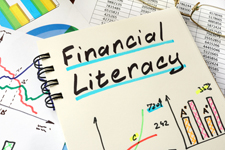
Thanks to burgeoning student debt and concomitant political reaction, financial literacy is no longer strictly the purview of the financial aid office. As a result, a team at the University of Minnesota system is working to spread financial literacy and debt management awareness to offices across their campuses, so students receive timely and relevant financial aid messaging and guidance from all of their points of contact.
“Financial literacy work can be done throughout the house--admissions and registrar folks included,” said Niki Pechinski, Financial Literacy Educator at the UMN-Duluth.
“People in advising and other professions have more face time with students than those of us in behind-the-scenes roles, and can really be better mouthpieces about student borrowing,” said Tina Falkner, Student Services Director at UMN-Twin Cities.
Pechinski and Falkner offered a well-received session at UMACRAO’s Annual Meeting last fall, where attendees were responsive and eager to help students in this way.
“The presentation was really geared to answer the question ‘why does this matter?’ -- why does an admissions officer or registrar need to understand this work that has traditionally lived in the financial aid office?” Falkner said.
For starters, savvy admissions officers can demonstrate that a prospective student’s financial health and literacy are a part of the campus community ethos, which may make an institution more appealing to students and their families.
And from a records perspective, research shows a strong connection between financial choices and degree progress.
“There’s a financial cost to not having a clear path to your degree,” Pechinski said. “Financial aid decisions and financial stress can impact G.P.A. and time to graduation.”
To help students have a more holistic experience integrating financial literacy into their collegiate experience, the UMN has begun a “borrowing history initiative,” providing personalized basic student loan borrowing information to students. The goal is to take the abstract idea of borrowing and demonstrate what repayment might look like in the real world.
“It’s not intended to scare or shame students about borrowing,” Falkner said. “It’s an educational push to help students understand borrowing and make wise choices as they progress through their career. This system-wide initiative is just the start of the financial literacy and wellness project at UMN. It’s just one of many pieces.”
“We’re beginning to figure out what tools we can provide as a starting point for our partners so they can have these conversations with students,” Pechinski added. “And with some training, we can increase the number and depth of these conversations to help students make decisions with their eyes open.”
Pechinski and Falkner will bring their session “Financial Literacy and Debt Management: Helping our Students Help Themselves” to the AACRAO Annual Meeting in Minneapolis (April 2-5, 2017). “This session is an interactive conversation: ‘what are you doing on your campus?’ and ‘here’s what we’re doing on ours,’” Pechinski said. Learn more and register now for the AACRAO Annual Meeting.